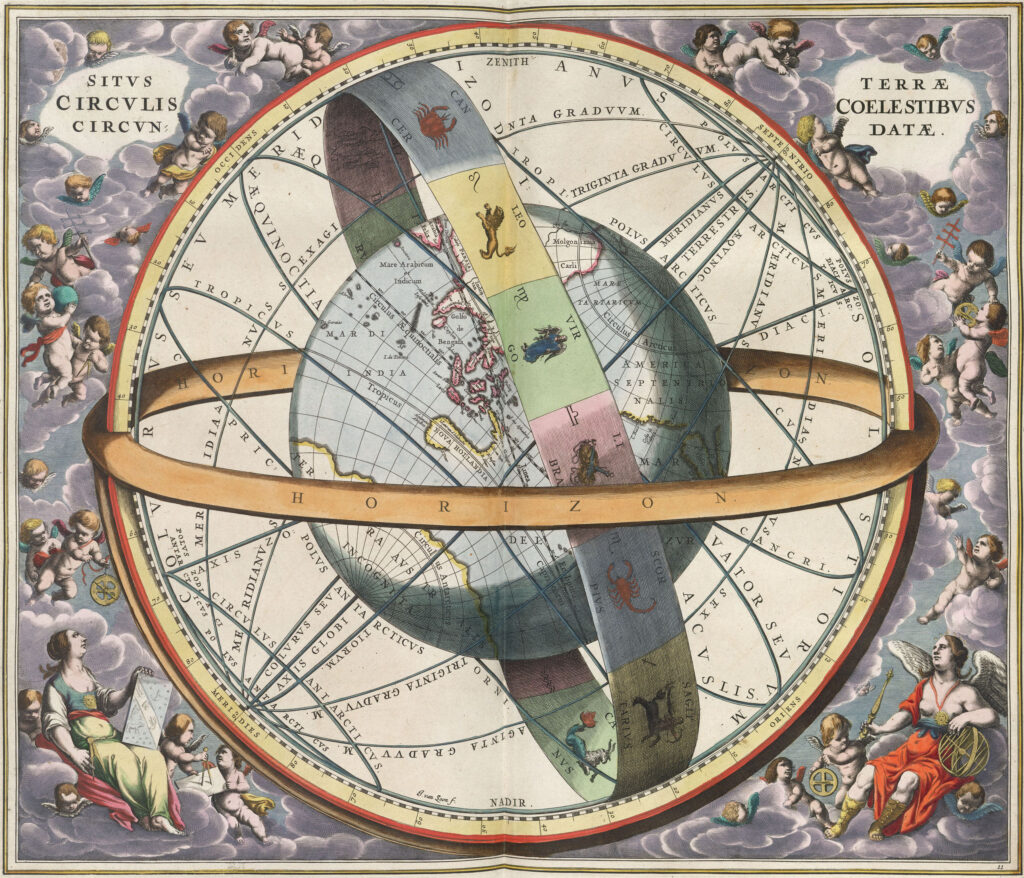This is a quick review of some astronomy facts and terms that help understand the Nebra Sky Disc.

There are several helpful lines (great circles actually) in the night sky:
- the horizon,
- the Earth’s equator projected up to the sky, and
- the ecliptic.
Thinking within an old understanding of the earth-centered universe, the ecliptic is the path of the Sun on the celestial sphere. The planets also stay on or near this path, and being close to it makes the constellations of the zodiac important.
The ecliptic is similar to an “equator of the sky” but is not the same as the Earth’s equator projected up to the sky. These lines (or great circles) cross at two points in the sky, visited by the Sun each year, and are known as the spring and autumn equinoxes.
During a northern winter, the ecliptic is low in the sky during the day, but high at night. In particular, it is at its highest on the night of the winter solstice. This night is also the longest and darkest of the year. The winter was and is down-time for many farmers. For these reasons, and consistent with early historical records from Europe, the time around the winter solstice is a particularly good time for making observations, and perhaps for a public declaration and celebration of a new lunar year.
Our modern explanation of the seasonal skies is the daily rotation of the Earth, and a tilt in the axis of rotation relative to the plane of the Solar System. This axis “wobbles” over centuries, similar to the wobble of a spinning top, resulting in a subtle change to the equinoxes (around 1 degree in a long human life). In an earth-centered view, mighty power is required to spin and then shift the axis of the entire cosmos.
In modern terms, the plane of the Moon’s orbit is not precisely aligned with the plane of the Earth’s orbit, nor the Earth’s equator. For this reason, the Moon wanders from the ecliptic more than the planets – by up to a little over 5° North or South. If this were not the case, we would see lunar and solar eclipses every month. Instead, we only see eclipses when the Moon is on the ecliptic – hence the shared root of the words.
Reviewing some more basics – the Sun appears to go around us once per day, of course, as do the stars on the celestial sphere. However, the speed of the Sun and stars are not quite the same – the difference is about one degree, or 4 minutes of time, per day. So the Sun appears to move on and around the celestial sphere once each year.
Seen from the equator, the Sun and stars rise in the East, travel overhead, and set in the West. Over a year, all or almost all of the stars of the entire sky can be seen (depending on local conditions). At the North Pole, half of the sky appears to rotate around the observer and the North Star directly above, and no stars rise or set. At latitudes in between, some stars, called circumpolar stars, appear to circle the North Star once per day, and are visible all night, every night. Other stars, like those in the zodiac, rise and set and are not visible during some seasons. Some southern stars are never visible.